Solar Solace
Awarded Senior Project honors at the NYU Gallatin School of Individualized Study.
Guidance: Louise Harpman
2019
Site
Located in Manhattan, the apartment has one small Southeast facing window. Like many other apartments in densely urbanized cities, it suffers from a dearth of natural light.


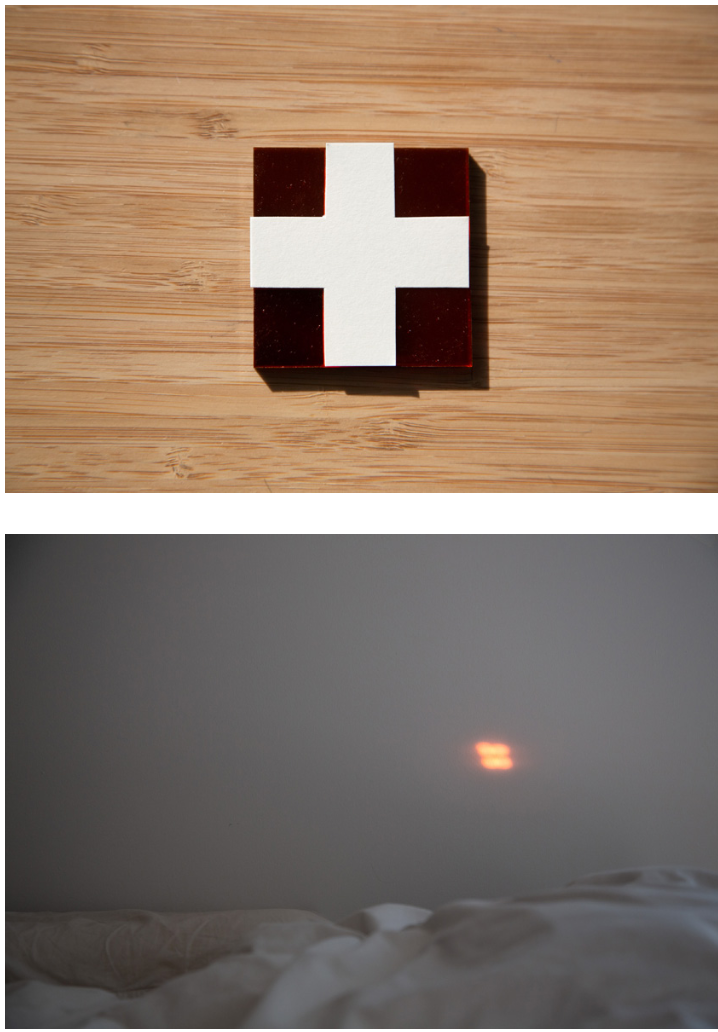
Natural weather phenomena is essentially brought indoors and, in doing so,makes visible not only various scales of time but also of larger scales of space in the surrounding natural world. Whereas mirrors have often been used to expand the perception of indoor space, here they are used to bring the outdoors inside.
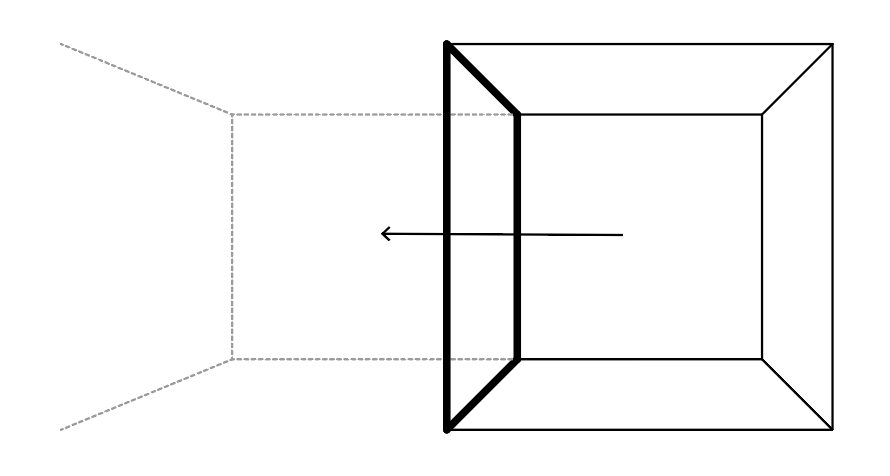

Weather conditions like the wind and movement of clouds are magnified.
The passagr of an hour is traced by the movement of beam across South wall.
This investigation of sunlight brought me to time, and I was drawn to it’s nebulousness. How can something that happened last year can feel like it was yesterday, while something from the past week feel it was a month ago? Could I give time scale and ‘concreteness’ to by translating it into a spatial vocabulary? In the same way that comparing an object’s size relative to your body can help to make sense of it’s scale, can the same be done with time?
Precedents
The Long Now Foundation asks how thinking of longer scales of time can help us remember our responsibility to the planet.
Clocks in Edo Japan had hours that varied in length depending on the seasons.
Space has also been connected to memory throughout history, such as in the ancient Greek and Roman Method of Loci.
Refined Brief
I turned to computation to analyze the precise movement of the sun and its interactions with mirrors placed at different angles.
Though I had worked with generative design in Grasshopper in the past, for this project I taught myself how to work with geographic data and sunlight analysis with Ladybug.

Concept: Calendar in a Room

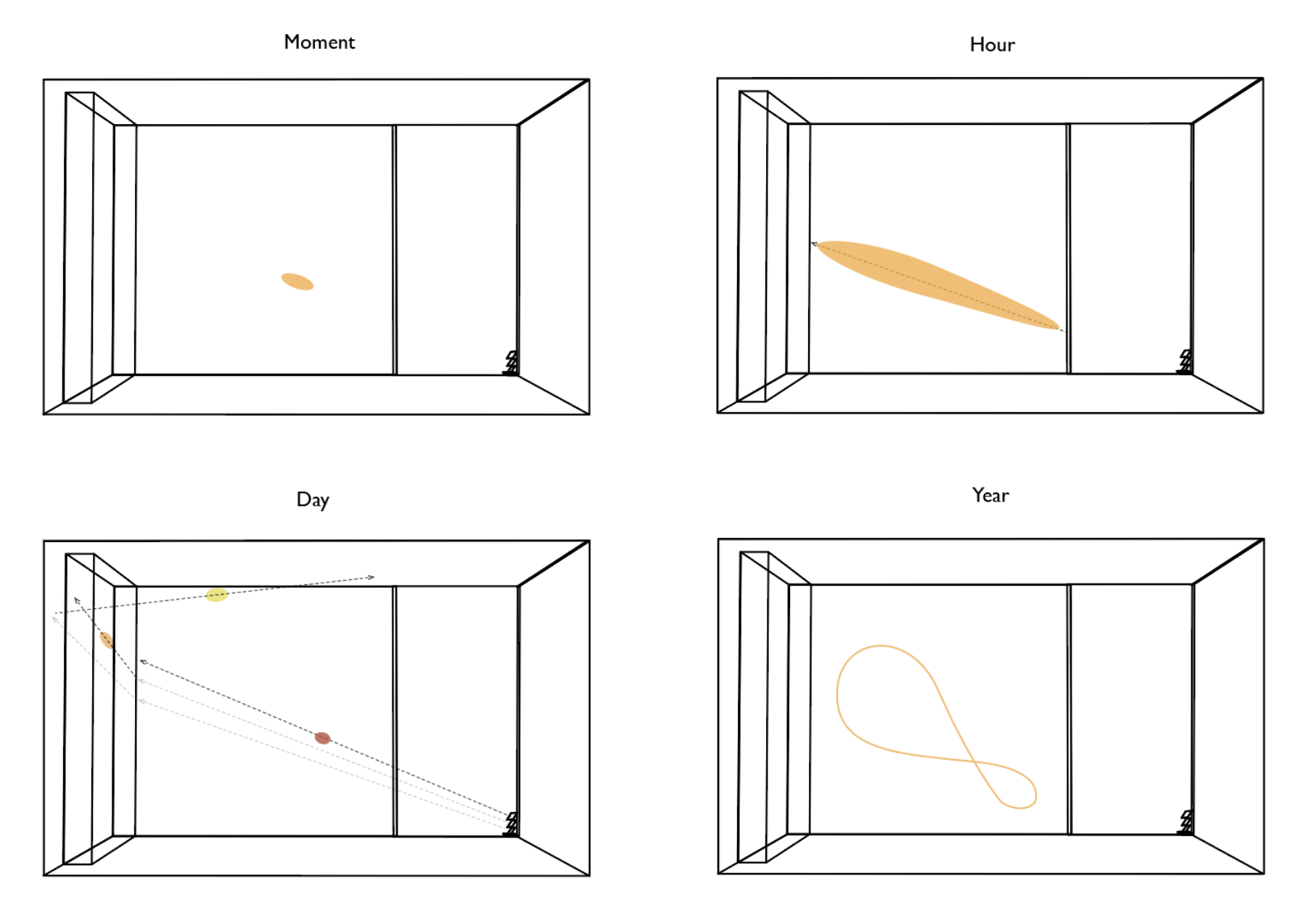
Due to the solar analemma, each beam of light does not return to the exact same spot until the same time next year. This gave rise to a way to create an annual ‘calendar’ to inscribe memories in space and light.

With Grasshopper and Ladybug, I created a tool that could hold the mirrors at exact angles in order for their reflections to systematically move across the room.
I worked between sketches and hands on experimentation to figure out how to best create a modular device.
![]()

I challenged myself to use materials from previous projects. With the exception of these screws, nothing was purchased for this particular project.
To ‘inscribe’ memories into the space, additional pieces of mirror can be placed on the wall.
 Here a memory is inscribed on November 10, 2019 at 1:23pm.
Here a memory is inscribed on November 10, 2019 at 1:23pm.
 The mirror is placed within the beam of light on the wall.
The mirror is placed within the beam of light on the wall.
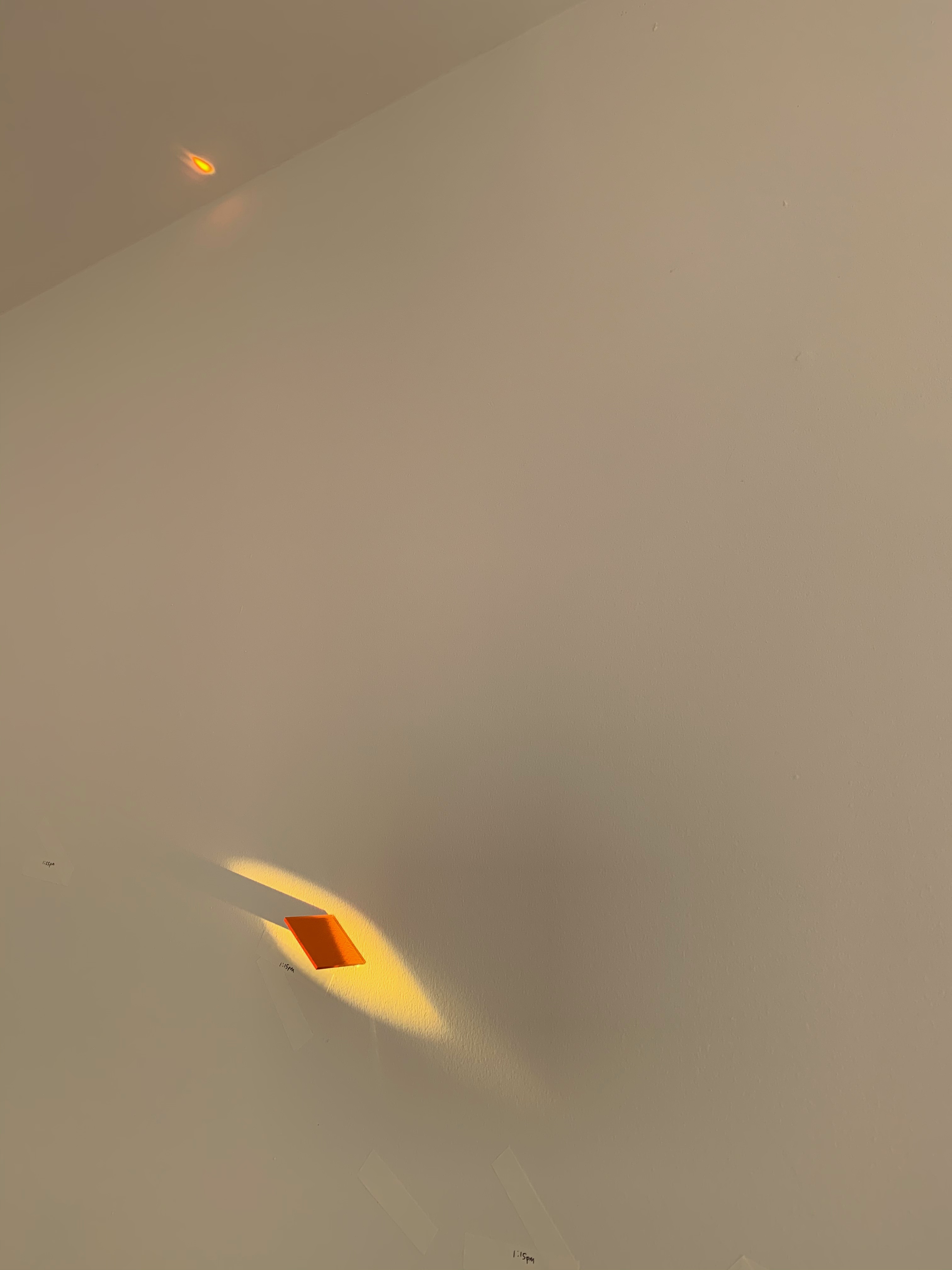 In the moment, this is the effect that is created.
In the moment, this is the effect that is created.This effect does not happen again until the same time next year. When the memory is ‘activated’, the beam of light from the memory crawls up the wall until it becomes a spot on the ceiling, and fades.
Because each memory only happens once each year - if the weather is favorable - it offers an antithesis to the usual ways in which we give materiality to time today.
As a device that relies on natural cycles to function, it considers the question: how is our conception of time linked to the environment? If the sun does not come out, then the device does not work. Unlike our clocks and calendars that are constant and independent from nature, this calendar relies on natural cycles to function.
Other placements of ‘memories’ also engage different parts of the apartment, like this beam which shines into the hallway.
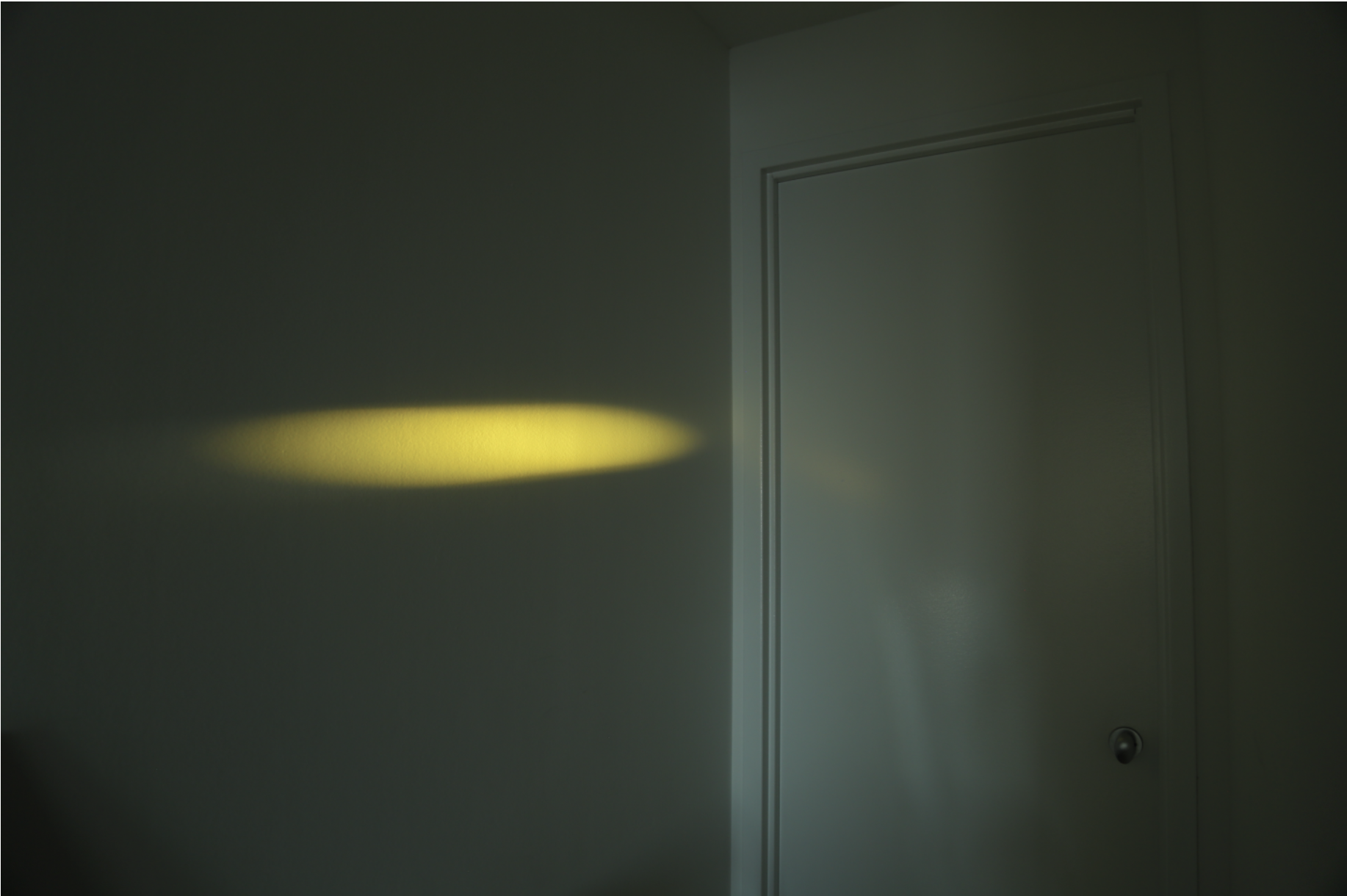
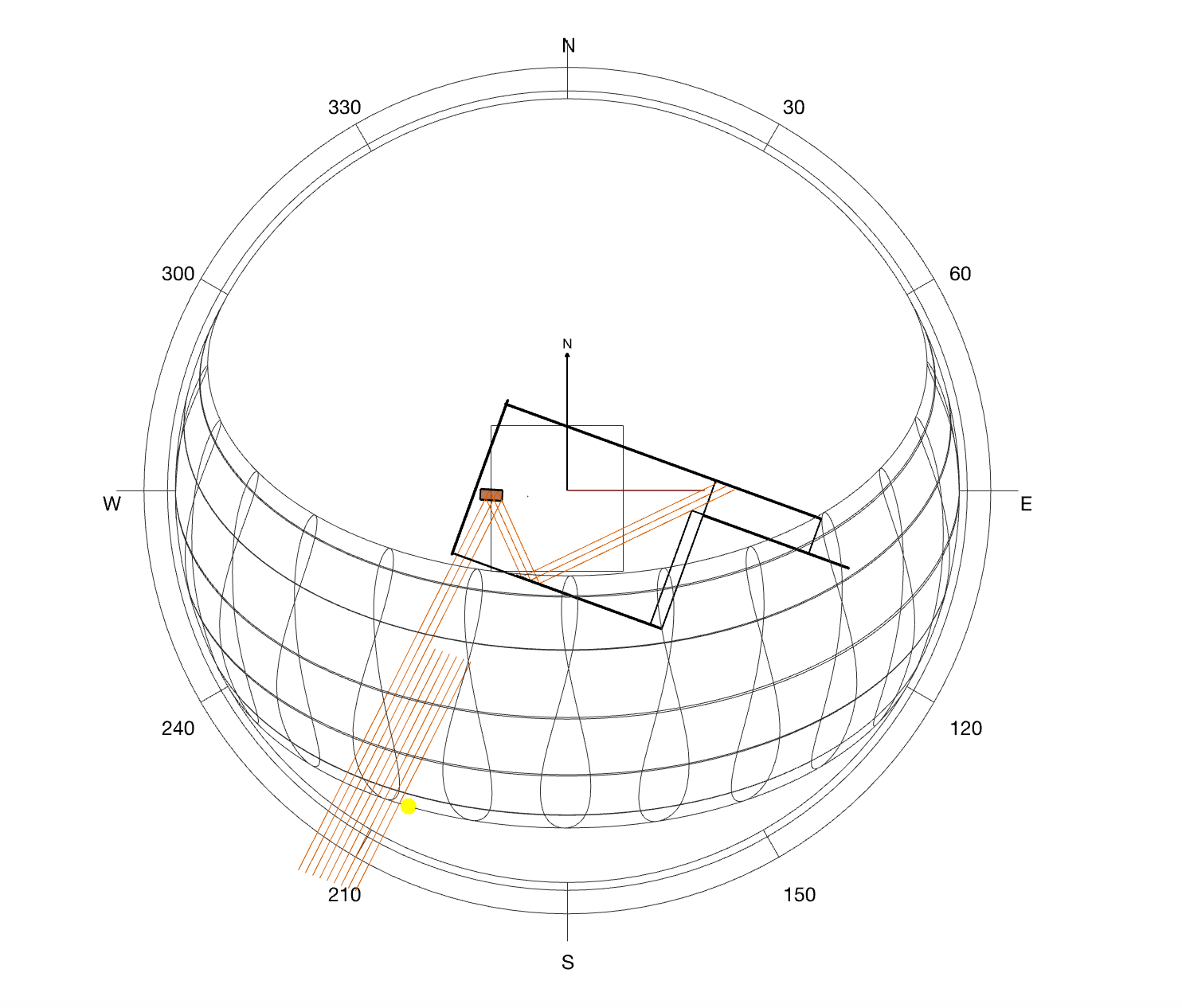
Over time, the space is transformed.

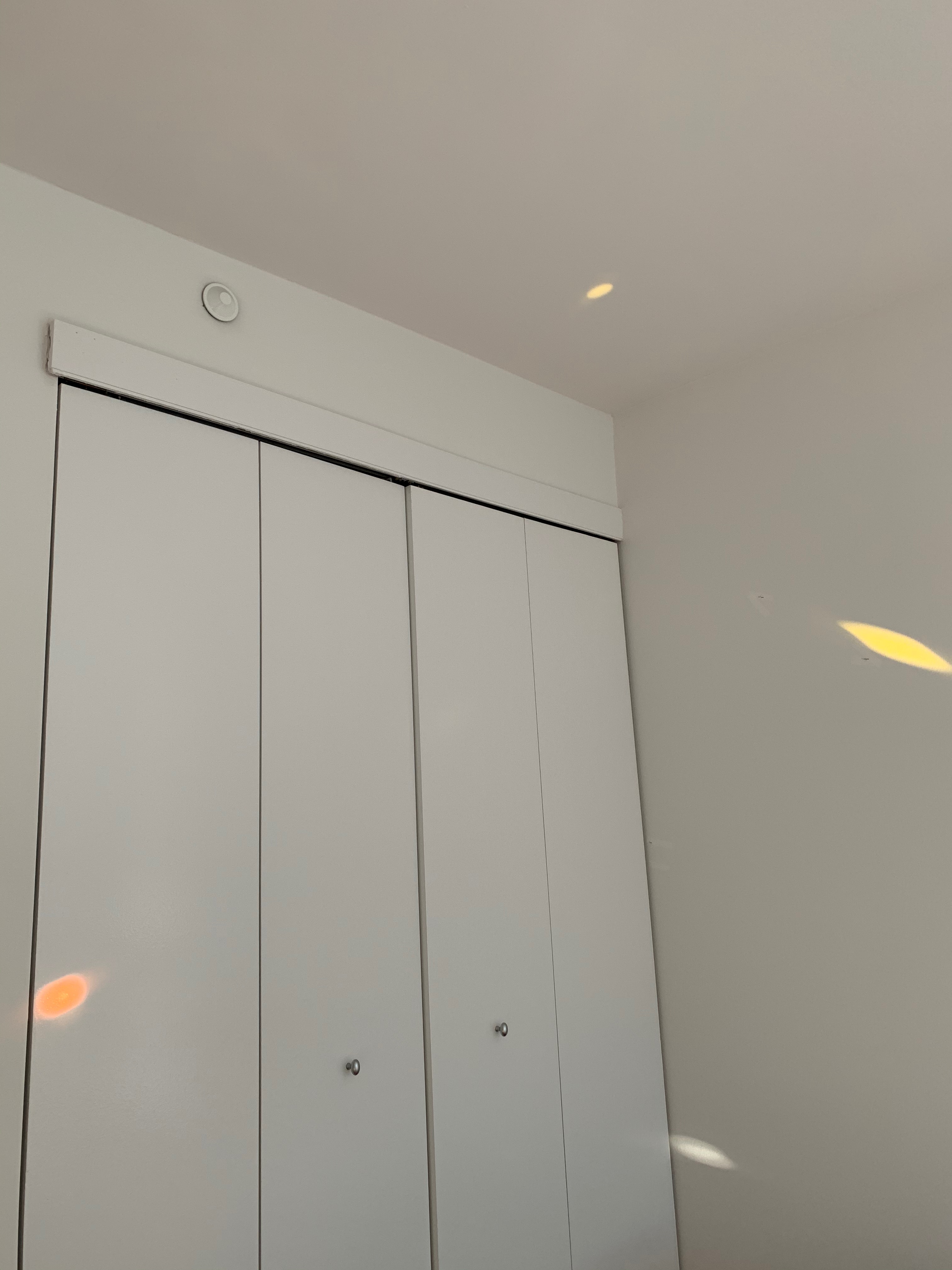
Skills: Rhino3D, Grasshopper, Ladybug & Radiance, Laser Cutting